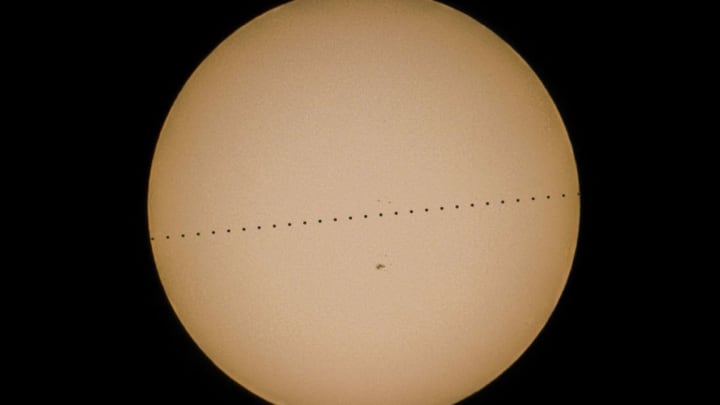This month's sky-gazing event calendar is all about transits. In astronomy, a transit occurs when one celestial body appears to pass directly in front of another in the night sky, causing the light from one body to diminish in some cases. As Geek reports, there are two main transits to look out for in November: that of Mercury moving across the sun and the dimming and brightening of the "demon star" Algol.
What is a Mercury transit?
Mercury is currently in retrograde (though you shouldn't blame that for any chaos in your personal life). As the innermost planet travels "backwards" across the sky this month, it will make a rare detour past the face of the sun on November 11. Mercury's transit across the sun is something that only happens roughly 13 times every 100 years. Such an event won't be seen again in the U.S. until 2049.
This time around, it will take Mercury about five and a half hours—starting just after sunrise on the East Coast—to make the full journey from one end of the bright yellow disc to the other.
What is a "demon star" transit?
The transit of Algol, also known as the demon star, is a much more common event, but it's no less spectacular. Algol is really two stars in the constellation Perseus that are constantly orbiting each other. Every 2.86736 days, the smaller star of the pair passes in front of the larger star, making it appear slightly dimmer for 10 hours at a time. In the first half of the month, most of these transits occur after sunset on the East Coast, which is the best time to observe the transition. The next is set for November 9 at 3:17 a.m. EST, with the one after that taking place on November 12, six minutes after midnight.
Algol gets its monstrous nickname from a classic villain of Greek mythology. The star is supposed to resemble the winking, snake-haired head of the gorgon Medusa, who was slain by Perseus. Algol is a name derived from an Arabic word meaning "the demon's head."
How to see Mercury's and Algol's transits
To see both of these events, you'll need some special equipment. Looking directly at the sun is never a good idea, and NASA recommends using a telescope with a certified sun filter to watch Mercury's transit safely on November 11. A solar projection box or sun funnel would also allow you to observe the planet's passage without damaging your eyes.
There's no harm in looking straight at the twin stars that make up Algol, but you'll have trouble seeing them "blink" with your naked eye. For that event, a regular telescope or binoculars would do.
[h/t Geek]
